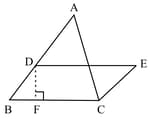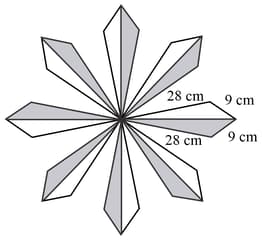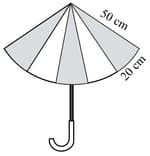M L Aggarwal Solutions for Chapter: Heron's Formula, Exercise 3: Exercise 12.3
M L Aggarwal Mathematics Solutions for Exercise - M L Aggarwal Solutions for Chapter: Heron's Formula, Exercise 3: Exercise 12.3
Attempt the practice questions on Chapter 12: Heron's Formula, Exercise 3: Exercise 12.3 with hints and solutions to strengthen your understanding. CBSE Syllabus Standard Mathematics for Class IX solutions are prepared by Experienced Embibe Experts.
Questions from M L Aggarwal Solutions for Chapter: Heron's Formula, Exercise 3: Exercise 12.3 with Hints & Solutions
A field in the form of a parallelogram has sides and one of its diagonal is long. Find the area of the parallelogram.
If the perimeter of a rhombus is and its one diagonal is long, find the area of the rhombus (in ).
Find the area of a quadrilateral in which and diagonal .
The sides of a quadrilateral are and (taken in order) respectively and the angle between the first two sides is a right angle. Find its area.
Two parallel sides of a trapezium are and and the other two sides are and . Find the area of the trapezium.
In the given figure, has sides and . On the base , a parallelogram of same area as that of is constructed. Find the height of the parallelogram (in ).

A floral design on a floor is made up of tiles which are triangular, the sides of the triangle being and as shown in the given figure. Find the cost of polishing the tiles, at the rate of paise per .

An umbrella is made by stitching triangular pieces of cloth of two different colours as shown in the given figure, each piece measuring and . How much cloth of each colour is required for the umbrella?

